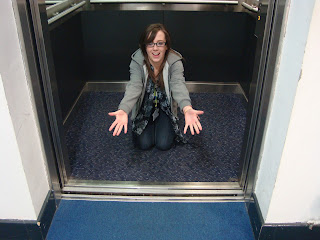The layout in which images are put together on a page is crucial to the way in which the reader visualises the story. The gutter allows the creator to leave information out of the story, then allows the audience to make their own conclusions about what happens within it.
The first instance that we were given of telling a story by using a small amount of information (in this case words) was Ernest Hemingway's flash fiction story; 'For sale: Baby shoes, never worn.' The piece is evocative in its own right, and only using 6 words is extremely impressive. The more you read between the lines, the more you get from the short story.The variety that we have in our photographs, the more interested the viewer will be and so it will evoke more thought. Examples of this are:
'Mystery on the street' - Otto Umbehr (1928). The camera angle and the use of shadows gives a multitude of stories for the audience to choose from.
'New Brighton' - Martin Parr (1986). The busy scene has various points of focus which makes the single image a lot more interesting.
These images are of course real life photography, but we also discussed cartoon images. This is when we spoke about the arrangement of images on the page and the spaces in between. Example of this is:
Graphic novels - example I chose is a page out of 'Nemesis' by Mark Miller. The gutter which lines the action allows the audience to fill in the missing parts and in their mind create a moving image based on what they are given.
The classic comic book knows how to display action through illustration. This isn't so simple in photography so we have to find ways around this. Using post production editing such as Photoshop.
Once we had the discussions about sequential imagery, we were asked to create our own sequence of 5 images portraying a story (in pairs). This was so we could experience having to convey a story very fast and to the point. This link with out current society of fast past advertisements and the likes.
Me and my partner decided on the story of someone getting into a lift and becoming stuck, then eventually being freed. This gave us the beginning, middle and ending in which all stories are based around (even Hemingway's 6 word flash fiction).
Here are the 5 final images that we chose:
Its a simple story, I will admit, but none the less I hope we have conveyed a story you all understand! Anyway I am very tired now so I will do another blog which will focus on the work of Scott McCloud - American comic book artist and theorist.
Speak soon!
Image Credits: www.metmuseum.org
news.bbc.co.uk
www.thebooksmugglers.com
ranterbanter.wordpress.com









No comments:
Post a Comment